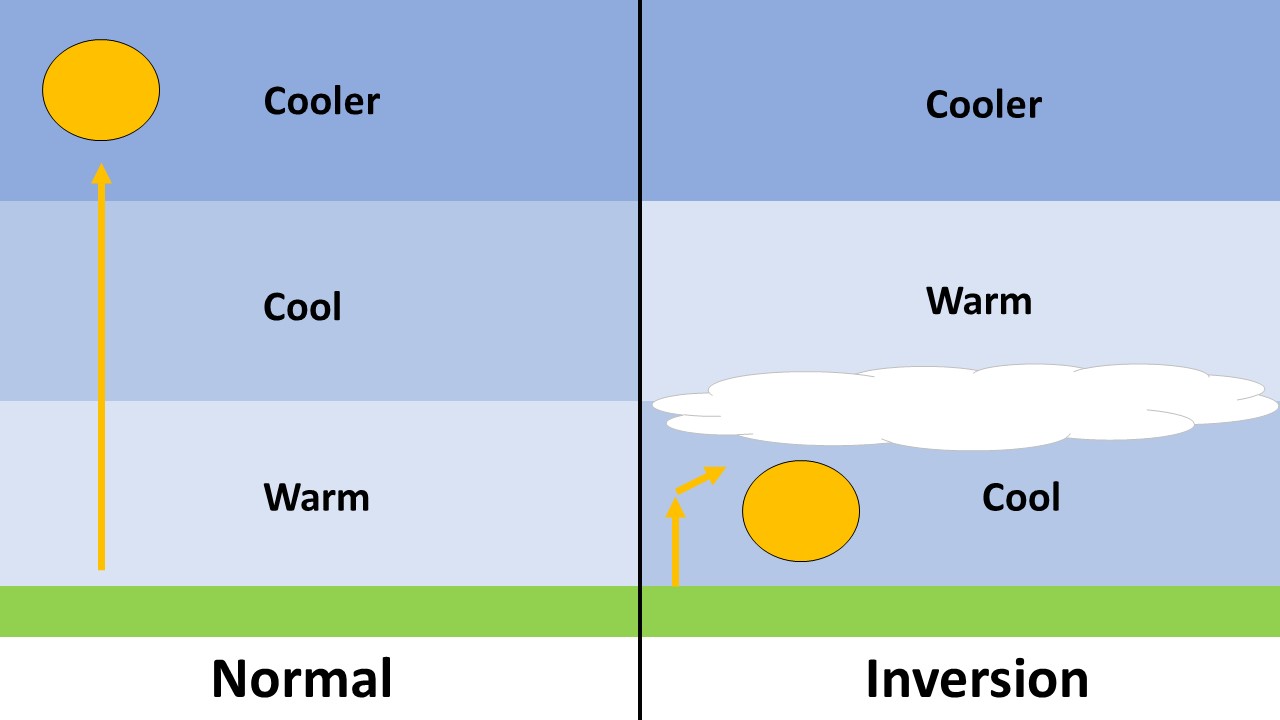About Temperature Inversions

Temperature inversions describe layers in the atmosphere where the air temperature increases with height. Typically, air temperatures decrease with height above the Earth's surface, but inversions occur when the air near the ground cools more quickly than the air above it. This results in warmer air above cooler air, which acts like a cap, preventing much vertical movement in the atmosphere. Inversions usually set up in the early evening and last until a few hours after sunrise. Typically, skies are clear, winds are calm, and you may notice fog or smoke and dew during these events.

Figure 1 illustrates how warm air moves in the atmosphere under normal and inversion conditions. During normal conditions, the air (represented by the orange circle) warms near the Earth’s surface and rises upward, since warm air is more buoyant than the cooler air surrounding it. In the inversion scenario, the air near the ground is trapped in the lower, cooler layer as the warmer air above it acts like a cap. During temperature inversions, fog is very common (Figure 2).
Iowa State University summarized conditions favoring temperature inversions as well as signs of temperature inversions and can be seen below.Conditions that favor the development of temperature inversions:
- Clear skies (25% or less cloud cover)
- Light and variable winds (below 3 mph)
- Dry soil surface
- Low elevation areas such as valleys and basins where cool air can sink and collect
Common signs of temperature inversions:
- Mist, fog, dew or frost are present
- Smoke or dust hang in the air; may move horizontally just above the surface
- Distant sounds become easier to hear
- Smells are more distinct
The University of Missouri Weed Science developed a video titled The Skinny on Temperature Inversions further explaining temperature inversions.